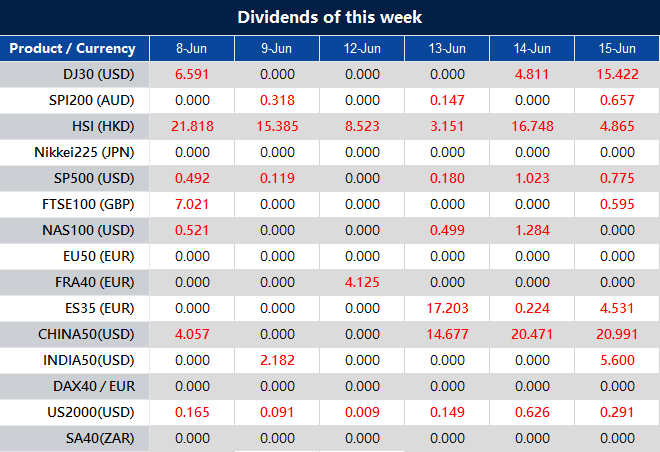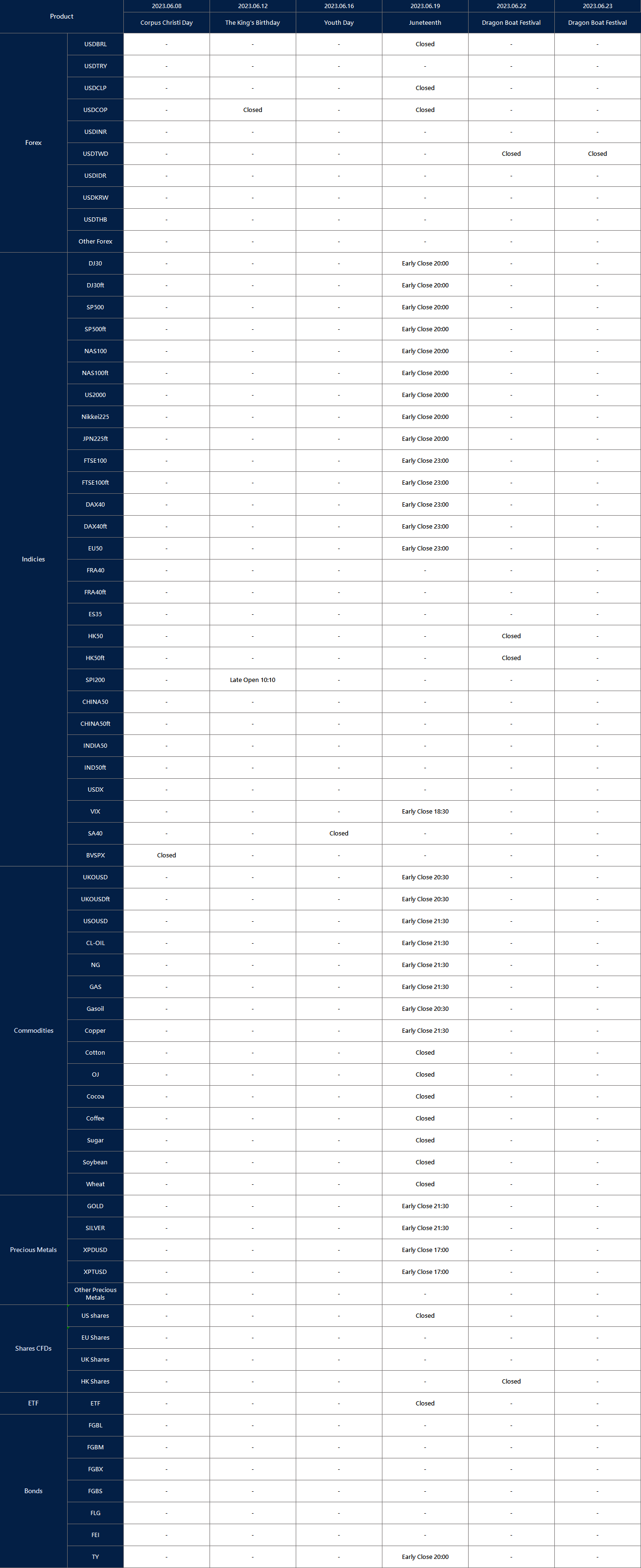Stocks climbed as new inflation data revealed a slowdown in price pressures in May, fueling optimism among investors that the Federal Reserve might opt to forgo a rate hike during its upcoming policy decision this week. The Dow Jones Industrial Average, S&P 500, and Nasdaq Composite all experienced gains, with the latter two indices reaching their highest closing levels since April 2022. The consumer price index for May showed a 4% year-over-year increase, the slowest annual rate since March 2021, prompting traders to increase their bets on the Fed maintaining the current target rate of 5% to 5.25%. This sentiment was further supported by market expectations and speculation of a “skip” rather than an extended pause in rate hikes.
Tech shares, in particular, led the market surge, benefiting from the positive outlook driven by easing inflation and interest rates. Oracle shares saw a 0.2% increase following better-than-expected results for the fiscal fourth quarter, while streaming giant Netflix experienced a 2.8% climb. Overall, the market responded favorably to the inflation data, reinforcing expectations that the Fed may adopt a cautious approach and provide further clarity on its rate hike plans to maintain stability and assess the impact of prior rate increases.

Data by Bloomberg
On Tuesday, the overall market showed a positive trend with a 0.69% increase across all sectors. The Materials sector had the highest gain, rising by 2.33%, followed by Industrials at 1.16% and Consumer Discretionary at 1.00%. Information Technology also saw a modest increase of 0.71%. Real Estate and Financials sectors both showed a 0.62% gain, while Health Care and Energy had smaller gains of 0.53% and 0.47%, respectively. Consumer Staples and Communication Services sectors experienced more modest gains with increases of 0.42% and 0.27%, respectively. However, the Utilities sector showed a slight decline with a decrease of 0.06%.
Major Pair Movement
On Tuesday, the US dollar experienced a decline against the euro and sterling, as US CPI data indicated that the Federal Reserve would likely not raise interest rates during their upcoming meeting. This news also increased expectations of tighter monetary policy from the Bank of England. The dollar had already been weakening due to risk-on sentiment and pre-Fed selling. While Treasury yields initially dropped, they later rebounded, but the dollar only managed to gain against the yuan and the yen, which had been affected by the Bank of Japan’s efforts to support economic growth. The biggest winner among the major currencies was sterling, which saw a surge after positive UK economic data, including rising average hourly earnings, increased employment, and a lower jobless rate.
EUR/USD experienced a slight gain after Treasury yields recovered, although it encountered resistance from various technical indicators. The European Central Bank is expected to raise rates at upcoming meetings but then enter a period of keeping rates steady. USD/JPY recovered with a 0.46% gain, supported by a rise in 2-year Treasury yields. To surpass previous highs, it may require a more hawkish stance from the Federal Reserve.
Overall, the US dollar faced downward pressure against major currencies on Tuesday, while sterling emerged as a strong performer due to positive economic indicators, and the outlook for central bank actions played a significant role in influencing market sentiment.
Picks of the Day Analysis
EUR/USD (4 Hours)
EUR/USD Reacts to Inflation Data and Central Bank Meetings Amidst Volatility and Risk Appetite
The EUR/USD pair initially rose above 1.0820 on Tuesday following US inflation data but later retreated to around 1.0780 due to high government bond yields and risk appetite. Despite finishing positively, the pair remained far from its peak. The overall sentiment is bullish, but volatility is anticipated as the market awaits the FOMC meeting and the European Central Bank (ECB) decision.
German inflation data indicated a 6.1% annual increase in May, while the German ZEW survey improved unexpectedly in June. The US Consumer Price Index (CPI) for May showed a 0.1% rise, lower than expected, with an annual rate of 4%, suggesting a slowdown in inflation. This data could lead the Federal Reserve to pause its tightening cycle. The US Dollar initially fell but later recovered amid risk appetite and rising government bond yields. The future direction of the EUR/USD pair is expected to be influenced by the US Dollar’s performance ahead of the FOMC statement, with attention on economic projections and guidance from Federal Reserve Chair Jerome Powell.

According to technical analysis, the EUR/USD pair experienced an upward movement on Tuesday and was able to reach the upper band of the Bollinger Bands. It then slowly moved lower, targeting the middle band of the Bollinger Bands. The Relative Strength Index (RSI) is currently at 58, lower than the previous higher movement, indicating that the EUR/USD might be returning to a neutral stance.
Resistance: 1.0808, 1.0847
Support: 1.0757, 1.0721
XAU/USD (4 Hours)
Optimism Reigns as Soft US Inflation Data Fuels Dovish Expectations; Gold (XAU/USD) Trades Near Daily Lows
In response to softer-than-anticipated US inflation figures, Spot Gold (XAU/USD) traded near a daily low of $1,942 as optimism prevailed. The US Dollar experienced a decline throughout the day, further accelerating as the Consumer Price Index (CPI) fell below market expectations. The Bureau of Labor Statistics reported a 0.1% month-on-month rise in May’s CPI, accompanied by a 4% year-on-year increase, with the core annual CPI easing from 5.5% to 5.3%. These figures bolstered expectations of a dovish Federal Reserve (Fed), which is set to announce an update on monetary policy. Meanwhile, global stock markets embraced the positive news, while XAU/USD, after reaching a peak of $1,970.96 following the CPI release, felt the weight of optimism.

According to technical analysis, the XAU/USD pair is moving lower due to a shift in market sentiment towards risk-on conditions following lower-than-expected US inflation data. The XAU/USD has reached the lower band of the Bollinger Bands. Currently, the Relative Strength Index (RSI) is at 40, indicating that the XAU/USD is still in a bearish condition but has the potential to move slightly higher towards the middle band of the Bollinger Bands.
Resistance: $1,955, $1,972
Support: $1,939, $1,932
Economic Data
| Currency | Data | Time (GMT + 8) | Forecast |
|---|---|---|---|
| GBP | GDP m/m | 14:00 | 0.2% |
| USD | Core PPI m/m | 20:30 | 0.2% |
| USD | PPI m/m | 20:30 | -0.1% |






















